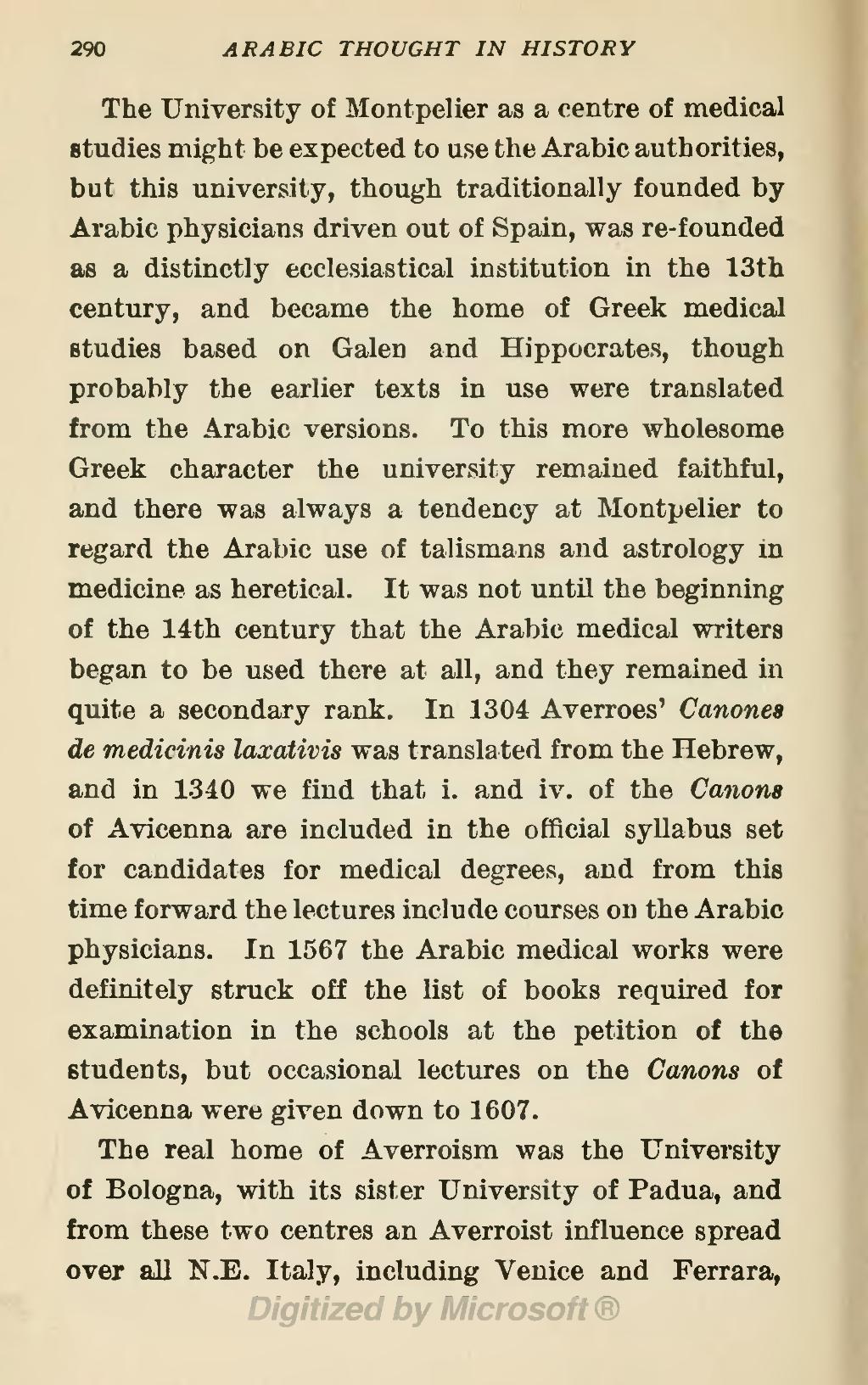The University of Montpelier as a centre of medical studies might be expected to use the Arabic authorities, but this university, though traditionally founded by Arabic physicians driven out of Spain, was re-founded as a distinctly ecclesiastical institution in the 13th century, and became the home of Greek medical studies based on Galen and Hippocrates, though probably the earlier texts in use were translated from the Arabic versions. To this more wholesome Greek character the university remained faithful, and there was always a tendency at Montpelier to regard the Arabic use of talismans and astrology in medicine as heretical. It was not until the beginning of the 14th century that the Arabic medical writers began to be used there at all, and they remained in quite a secondary rank. In 1304 Averroes' Canones de medicinis laxativis was translated from the Hebrew, and in 1340 we find that i. and iv. of the Canons of Avicenna are included in the official syllabus set for candidates for medical degrees, and from this time forward the lectures include courses on the Arabic physicians. In 1567 the Arabic medical works were definitely struck off the list of books required for examination in the schools at the petition of the students, but occasional lectures on the Canons of Avicenna were given down to 1607.
The real home of Averroism was the University of Bologna, with its sister University of Padua, and from these two centres an Averroist influence spread over all N.E. Italy, including Venice and Ferrara,
